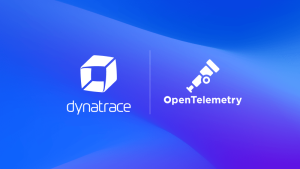Application performance monitoring (APM) solutions have evolved in recent years, and organizations now have plenty of options to choose from when selecting the right tools for their needs. But what differentiates one APM offering from another? And what criteria should business leaders keep in mind when evaluating APM vendors?
Here’s a brief primer on APM and how it has changed for cloud-native environments, and some tips on what to look for in modern APM solutions.
APM solutions: A primer
APM solutions track key software application performance metrics using monitoring software and telemetry data. Organizations use APM to ensure system availability, optimize service performance and response times, and improve user experiences.
G2 Research includes a clear definition of APM in its Grid Report for Application Performance Monitoring for Fall 2021. It explains that APM tools “allow users to monitor and track the performance of particular software or web applications to identify and solve any performance issues that may arise. These solutions provide performance metrics for applications, with specific insights into the statistics, such as the number of transactions processed by the application or the response time to process such transactions. APM products form a baseline for these metrics and monitor the applications for any variance from the baseline.”
In its 2021 Magic Quadrant™ for Application Performance Monitoring, Gartner® defines APM as “Software that enables the observation of application behavior and its infrastructure dependencies, users and business key performance indicators (KPIs) throughout the application’s life cycle. The applications being observed may be developed internally, as packaged applications or as software as a service (SaaS).”
APM vendors originally designed their solutions to quickly identify application performance issues in monolithic on-premises apps. In recent years, APM has expanded to encompass cloud-native environments and distributed applications composed of microservices.
How to evaluate APM solutions
Organizations have many options to consider when selecting the right APM tool for their requirements. By carefully considering the various APM tools available and how well they meet your needs, you’ll have the best chance of picking the right one for your organization.
As you do your research, you may find the 2021 Gartner Magic Quadrant for Application Performance Monitoring especially useful. Gartner combines deep industry expertise along with hundreds of customer conversations to categorize vendors into Niche Players, Challengers, Visionaries, and Leaders.
Gartner evaluates APM solutions according to these three functional dimensions:
- Digital experience monitoring (DEM)
- Application discovery, tracing, and diagnostics (ADTD)
- Artificial intelligence for IT operations (AIOps) for applications
Another great source of information is the G2 Crowd report because G2 is a peer-to-peer review site that helps organizations choose the right software and services based on over one million authentic, timely reviews from real users.
G2 looks for the following four capabilities for solutions to be included in its APM category:
- Monitor and track the performance and response time of software or web applications
- Create a baseline of performance metrics and alert administrators when performance varies
- Provide visual data for users to better understand the performance metrics
- Assist in remedying any application performance issues
In addition to industry research, these key criteria will help you find the best APM solution for your organization:
- Full-stack observability. Does the APM tool give you observability across the full stack or just certain layers of it? A modern APM solution should give you complete observability into your front-end, back-end, underlying infrastructure, and cloud environments.
- Application performance insights. Your APM tool should help you establish performance benchmarks, so you can understand what good performance looks like. It should give your teams actionable alerts when potential issues arise, and proactively spot issues before they impact user experience.
- Root-cause analysis. A good APM tool will empower you to quickly identify and resolve the root cause of any issues that do come up, enabling you to more closely adhere to SLAs and consistently deliver a high-quality user experience.
- Real-time awareness in context. The right APM tool will also help you keep a close eye on application transactions along with their business context and code-level detail.
- User experience diagnostics. To deliver flawless user experiences, an APM solution should be able to delve into real-user monitoring and synthetic testing, with the ability to replay session-level details.
- Insight into business KPIs. A truly modern APM solution provides business analytics, such as conversions, release success, and user outcomes across web, mobile, and IoT channels, linking application performance to business KPIs.
Not only should your APM solution be easy to use, it should also support and improve cross-functional collaboration within your organization. As the pace of digital transformation continues to accelerate, an APM solution should leverage the full range of technological innovations available and help you to future-proof your business.
The Dynatrace approach: APM and beyond
Dynatrace’s applications and microservices monitoring for cloud-native environments extend observability beyond system availability and service performance and response times. By leveraging automation and AI, Dynatrace improves user experiences at the scale of modern computing. Dynatrace is built on a unified data model to enable sophisticated automation and intelligence — two capabilities that ITOps and DevOps teams are finding increasingly important as the complexity of application and cloud environments exponentially increases.
G2 has again recognized Dynatrace as the #1 APM solution, based on 796 customer reviews, scoring Dynatrace’s APM solution as a 98 out of 100 — the highest score received in this report — in terms of overall satisfaction*. Dynatrace’s modern APM solution also ranks in multiple categories on G2 Crowd: AIOps Platform Software, APM Software, Container Monitoring Software, Session Replay Software, Cloud Infrastructure Monitoring Software, and DEM Software.
At the same time, Gartner named Dynatrace a Leader in the 2021 Magic Quadrant for Application Performance Monitoring (APM), and for the 11th consecutive time Dynatrace named a Leader in this report. For the second time, Gartner positioned Dynatrace highest and furthest in both Ability to Execute and Completeness of Vision.** In the September 2021 Gartner Peer Insights ‘Voice of the Customer’: Application Performance Monitoring report, Dynatrace was named a Customers’ Choice, in the September 2021 Gartner Peer Insights ‘Voice of the Customer’: Application Performance Monitoring report. Dynatrace received more 5-star reviews than any other vendor as of July 31, 2021. ***
Because it collects and analyzes a broader and deeper range of data and applies domain-specific intelligence to it using the AI engine, Davis, Dynatrace provides answers that are precise, actionable, and automatable.
Dynatrace brings together APM, infrastructure monitoring, and AIOps, adding digital experience and business analytics, all in context with code-level detail. This comprehensive platform approach allows you to understand all relationships and dependencies across the full stack so you can obtain accurate answers. Dynatrace is purpose-built for cloud-native and Kubernetes environments, providing crucial insight into how dynamic microservice workloads running inside Kubernetes containers are performing and how they communicate with each other.
Learn more about what makes a great APM solution in the 2021 Gartner Magic Quadrant for Application Performance Monitoring. Hear what users have to say in the 2021 Gartner Peer Insights Voice of the Customer: Application Performance Monitoring and the G2 Grid Report for Application Performance Monitoring for Fall 2021.
Here are some examples of what customers are saying about Dynatrace on G2:
“The best part of Dynatrace monitoring is the end-to-end view across the stack, which allows for faster time to resolution and more visibility. It’s got some great visualization, as well, to be able to spot the problem areas quickly, and allows for proactive measures to be taken on areas that are starting to look unhealthy. The AI that comes with the product is also quite clever and useful in narrowing down possible root causes of problems. The support team has been very responsive with questions we’ve had about the product. They were super patient when we were setting up new workloads and had questions about options with the setup.”
— Christopher C, Platform Manager at an enterprise
“Observability is an important aspect for managing our infrastructure stack, and Dynatrace helps us do it efficiently. Its Service Map gives you exactly what you need to trace the path of data flow and how inter-connected micro services are. We use a lot of serverless (FaaS) in our infrastructure, and Dynatrace really helps us troubleshoot failed invocations. Personally, I like the ‘replay’ option, which helps you literally re-run the issues and identify what happened.
In addition, they have great integration into all public cloud providers and have multiple options to create your own dashboard. Overall, a great monitoring tool.”
— Manish K, Service & Cloud Management, VES at an enterprise
*G2’s satisfaction rating is determined according to multiple criteria, including customer satisfaction with end user-focused product attributes based on user reviews; popularity and statistical significance based on the number of reviews received by G2; and the quality (including thoroughness) of reviews received.
**Gartner, Magic Quadrant for Application Performance Monitoring, Federico De Silva, Padraig Byrne, and Josh Chessman, 9 April 2021
Gartner does not endorse any vendor, product or service depicted in its research publications and does not advise technology users to select only those vendors with the highest ratings or other designation. Gartner research publications consist of the opinions of Gartner’s research organization and should not be construed as statements of fact. Gartner disclaims all warranties, expressed or implied, with respect to this research, including any warranties of merchantability or fitness for a particular purpose.
***Gartner Peer Insights ‘Voice of the Customer’: Application Performance Monitoring, 9 September 2021.
GARTNER and Magic Quadrant are registered trademarks Gartner, Inc. and/or its affiliates in the U.S. and internationally and is used herein with permission. All rights reserved.
Gartner Peer Insights Customers’ Choice constitute the subjective opinions of individual end-user reviews, ratings, and data applied against a documented methodology; they neither represent the views of, nor constitute an endorsement by, Gartner or its affiliates.
Gartner, Magic Quadrant for Application Performance Monitoring, Federico De Silva, Padraig Byrne, and Josh Chessman, 9 April 2021. Before 2015, Dynatrace was listed as Compuware. Dynatrace was spun off from Compuware following the privatization of Compuware in December 2014.





Looking for answers?
Start a new discussion or ask for help in our Q&A forum.
Go to forum